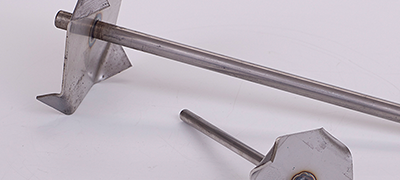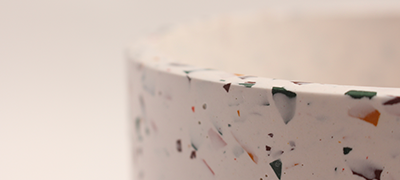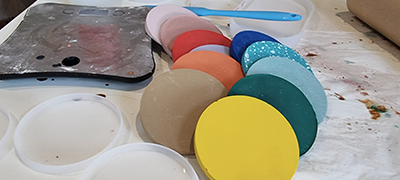You might have heard about Jesmonite and how amazing it is, or maybe you’ve never heard of it before and you’re wondering how it compares to other materials. We’ve pulled together a little comparison guide below to help you understand how Jesmonite differs from other similar materials on the market.
First let’s start by understanding Jesmonite…
From building ornate structures to home décor, Jesmonite has fast become the go-to casting material with artists and makers across the world. The two-part system includes a mineral base powder and an acrylic resin liquid. They are mixed together and then poured into a mould. Jesmonite is one of the more eco-conscious choices when it comes to resins. It contains no solvents or VOCs (volatile organic compounds). The end result is a finished piece that looks and feels like smooth stone. It’s lightweight, durable and can be adapted using decoration, pigments, metal effects and techniques such as terrazzo. Jesmonite AC100 and AC300 creations are usually ready to remove from the mould in just 20-30 minutes, making the casting process quick and fun!
Jesmonite VS Epoxy Resin
Much like Jesmonite, epoxy resin has really grown in popularity over the past few years. When cast, it gives a more translucent effect than Jesmonite, and many crafters create an almost glass-like effect with it to encapsulate decorative features such as dried flowers and glitter. You can add colours to Epoxy Resin in the form of dyes and mica powders, and epoxy resin will cure to a high shine, whereas Jesmonite cures to a matte finish. The downside to epoxy resin is that it can take up to 24 hours for the cast to set in the mould. This compares to Jesmonite AC100 and AC300’s 20-30 minutes. This makes epoxy resin a much longer process, something to consider if you’re planning to retail your creations. Another consideration to make is eco credentials. Jesmonite is solvent-free and contains no VOCs making it the better choice for the environment.
Jesmonite VS Concrete
Think of Jesmonite as the more creative concrete. In fact, Jesmonite AC730 is very much like concrete in the way it looks and feels due to the base powder being cement-based. However, when we think of concrete we probably think of a grey pavement or a worn down road. Of course, you can get creative with concrete, however Jesmonite is much better at achieving vibrant and strong colours. Concrete is extremely strong and can hold up under heavy items such as cars and vans. Jesmonite AC730 is more lightweight in comparison to concrete, making it better suited to crafting and decorative building work. It’s also waterproof, meaning it’s great for creating pieces that will be exposed to external weathering! When it comes to Jesmonite vs concrete, Jesmonite is often the material of choice on film and theatre sets, as it’s easier to manoeuvre and transport. Even using quick dry cement, cure time is still 24 hours. Which is a lot longer than Jesmonite AC100 and AC300’s 20-30 minutes. Not ideal if you’re impatient like us!
Jesmonite VS Plaster
Plaster is the closest alternative to Jesmonite AC100, AC200 and AC300 as each of these systems are gypsum (plaster) based. Plaster, like Jesmonite, has a quick cure time, taking just 30-45 minutes to cure. Typically, you’ll see plaster castings are mainly white in colour. Like Jesmonite, plaster can be pigmented (in fact, the Jesmonite pigments work well with plaster!) Unlike Jesmonite, plaster is very fragile and will chip easily. There are also no types of plaster that are waterproof, whereas with Jesmonite, you have the option of AC730 to give you a broader range of casting options such as outdoor plant pots and soap dishes.
Hopefully we’ve helped to shed some light on how Jesmonite compares to other materials you might have seen or heard of, but if you have any more questions, give us a shout on WhatsApp (bottom right).
Want to give it a try? Go shopping here
See also the full range of Jesmonite products here


